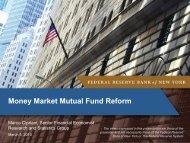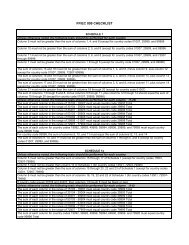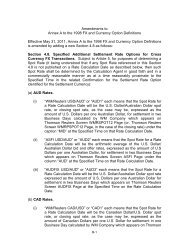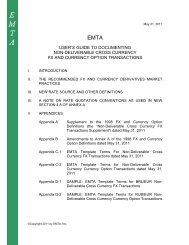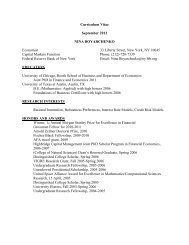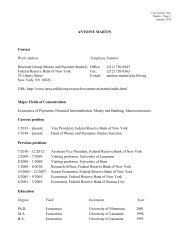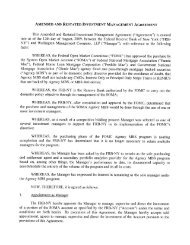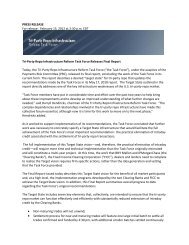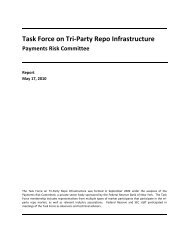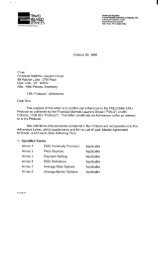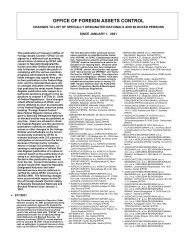Residential Foreclosures in the City of Buffalo, 1990-2000 - Federal ...
Residential Foreclosures in the City of Buffalo, 1990-2000 - Federal ...
Residential Foreclosures in the City of Buffalo, 1990-2000 - Federal ...
Create successful ePaper yourself
Turn your PDF publications into a flip-book with our unique Google optimized e-Paper software.
Table 15<br />
Age <strong>of</strong> Loan at Default: <strong>Foreclosures</strong> <strong>in</strong> <strong>2000</strong><br />
Percentage Less Than Four Years and<br />
Percentage More Than Eight Years<br />
Less Than More Than<br />
Community<br />
Four Years Eight Years<br />
Ellicott-Masten 59 21<br />
East Side 54 25<br />
Riverside 52 17<br />
South <strong>Buffalo</strong>-River 41 17<br />
North East 39 30<br />
East Delavan 33 31<br />
North <strong>Buffalo</strong>-Elmwood 31 31<br />
West Side-Central 22 31<br />
<strong>Buffalo</strong> total 39 27<br />
Sources: Erie County Civil Court records; Erie County<br />
property database; author's calculations.<br />
Overall, 39 percent <strong>of</strong> loans that foreclosed <strong>in</strong> <strong>2000</strong> were young loans that moved<br />
<strong>in</strong>to default <strong>in</strong> less than four years, while 27 percent were seasoned loans older than eight<br />
years. The average loan was 5.8 years old at default, nearly identical to <strong>the</strong> age found <strong>in</strong><br />
<strong>the</strong> Rochester study.<br />
While foreclosures on young loans are common <strong>in</strong> <strong>Buffalo</strong> as a whole, <strong>the</strong>y are<br />
even more prevalent <strong>in</strong> some <strong>Buffalo</strong> communities. The shares <strong>of</strong> loans that foreclosed <strong>in</strong><br />
less than four years <strong>in</strong> Ellicott-Masten (59 percent), East Side (54 percent), and Riverside<br />
(52 percent) were well above <strong>the</strong> share for <strong>the</strong> city as a whole. This f<strong>in</strong>d<strong>in</strong>g suggests that<br />
a particularly high concentration <strong>of</strong> risky loans has been made <strong>in</strong> those parts <strong>of</strong> <strong>the</strong> city. It<br />
is probably not a co<strong>in</strong>cidence that <strong>the</strong> Ellicott-Masten and East Side communities show a<br />
high concentration <strong>of</strong> subprime lend<strong>in</strong>g, and that Riverside— while exhibit<strong>in</strong>g a low<br />
proportion <strong>of</strong> such lend<strong>in</strong>g overall— has <strong>the</strong> highest share <strong>of</strong> subprime purchase<br />
mortgages among <strong>Buffalo</strong> communities.<br />
Despite <strong>the</strong> high share <strong>of</strong> foreclosures on young loans <strong>in</strong> <strong>the</strong> city, 61 percent were<br />
more than four years old. Thus, <strong>the</strong> older foreclosures alone represent a significant<br />
growth <strong>in</strong> foreclosures over <strong>the</strong> decade. In <strong>the</strong> communities with <strong>the</strong> highest foreclosure<br />
rates— East Delavan and North East— foreclosures tended to be split among loans that<br />
53



